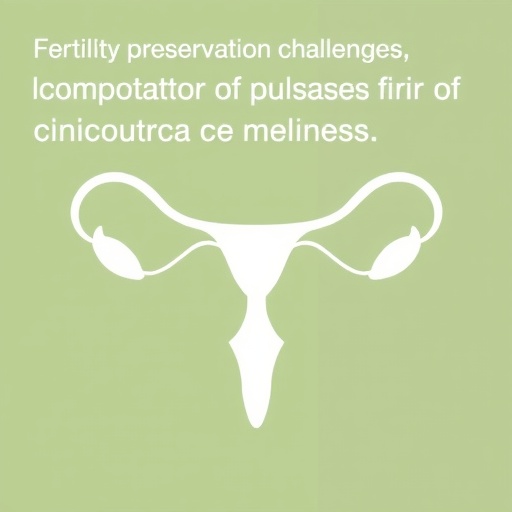In the realm of reproductive health, the implications and challenges of cancer treatments on fertility are profound and complex. A recent case report and literature review discussed in a paper by Yalcin, Kula, Baysal, and colleagues sheds light on a particularly troubling aspect: fertility preservation in patients diagnosed with p53abn Grade 2 Endometrioid Endometrial Cancer. This condition poses unique difficulties that can significantly impact the lives of affected individuals. The research details both the clinical findings from the case and the broader implications drawn from the analysis of existing literature.
Endometrial cancer, especially of the endometrioid subtype, has been on the rise in recent years, with increasing incidences reported globally. This type of cancer arises from the lining of the uterus, also known as the endometrium. Among young women pursuing family planning, a diagnosis of endometrial cancer can lead to devastating consequences, particularly due to the aggressive nature of the disease and the imperative for timely intervention. The study emphasizes that the p53abn mutation marks a specific genetic variation associated with more aggressive cancer behaviors and poorer prognoses, raising critical questions regarding the intersection of oncological and reproductive health.
The complex relationship between cancer treatment and fertility preservation is particularly relevant in the context of endometrial cancer. Surgical interventions such as hysterectomy are often necessary but leave no room for future pregnancies. Consequently, the need for alternative strategies to preserve fertility is highlighted, allowing patients to explore options such as oocyte cryopreservation or in vitro fertilization (IVF). However, these methods are not without risks, particularly in patients undergoing active treatment, which often includes chemotherapy and hormonal therapies.
In the specific case elaborated in the study, the patient faced the multifaceted challenges of preserving her fertility while also managing her cancer diagnosis. As she navigated through treatment options, the medical team had to balance the urgency of cancer treatment against the fundamental desire for future childbearing. Such cases underscore the necessity for healthcare providers to engage in informed and sensitive discussions with patients, addressing both the emotional and physical ramifications of their disease and potential interventions.
The literature review accompanying the case report provides a broader lens through which to examine current practices in fertility preservation for patients with p53abn endometrial cancer. Existing methodologies that promise to safeguard fertility must be critically evaluated. There is a pressing need for more comprehensive guidelines that delineate the efficacy and safety of various fertility-preservation strategies tailored specifically for oncology patients. The amalgamation of surgical procedures, hormonal treatments, and innovative fertility techniques creates a mosaic of potential options; however, these must be weighed against the medical realities of each individual case.
Moreover, patient education plays a pivotal role in decision-making. Patients should be informed not only about their cancer diagnosis but also about the potential impacts of treatment on their reproductive capabilities. Healthcare providers must prioritize communication and support systems that empower patients to make informed decisions regarding their health and future. In this sense, the emotional support for patients navigating such tricky waters cannot be overstated.
The ethical dimensions of fertility preservation in cancer patients introduces another layer of complexity. How do we balance the urgency of effective cancer care with the deep-seated desires of patients wanting to become parents? There needs to be a dialogue among oncologists, reproductive endocrinologists, and patients themselves to explore the ethical implications of delaying treatment for fertility preservation purposes. The aforementioned study raises poignant questions about best practices in clinical settings and the need for personalized, patient-centered care approaches.
As this case report highlights, advancements in technology provide more options than ever before for those looking to preserve their fertility amidst a cancer diagnosis. Emerging techniques, such as fertility-sparing surgeries and the use of advanced reproductive technologies, show promise, but the risks associated with delaying necessary cancer treatments remain a significant concern. Each patient’s situation is unique, and the decision-making process must be collaborative, involving multiple specialties to ensure comprehensive care.
The study underscores the importance of ongoing research in this domain. As our understanding of the genetics of cancer, including mutations like p53abn, evolves, so too must our approaches to both treatment and fertility preservation. Future research initiatives should aim to develop and refine fertility-preservation strategies that are not only safe and effective but also tailored to the specific needs and conditions of patients suffering from endometrial cancer.
In conclusion, the intersection of fertility preservation and cancer treatment presents a multifaceted challenge that demands a nuanced understanding from the medical community. Through collaborative efforts and continued research, healthcare providers can enhance the quality of life for cancer patients, helping them navigate the difficult journey from diagnosis to treatment to recovery, while preserving their hopes for family and future. This case report serves as both a cautionary tale and a call to action, inviting further exploration and dialogue in the vital area of fertility preservation for those battling cancer.
Subject of Research: Fertility preservation challenges in endometrial cancer patients.
Article Title: Challenges in Fertility Preservation for p53abn Grade 2 Endometrioid Endometrial Cancer: A Case Report and Literature Review.
Article References:
Yalcin, I., Kula, H., Baysal, A. et al. Challenges in Fertility Preservation for p53abn Grade 2 Endometrioid Endometrial Cancer: A Case Report and Literature Review. Reprod. Sci. (2025). https://doi.org/10.1007/s43032-025-01990-9
Image Credits: AI Generated
DOI:
Keywords: Fertility preservation, endometrial cancer, p53abn, reproductive health, oncological care.
Tags: aggressive nature of endometrial cancerclinical findings in endometrial cancerendometrioid endometrial cancer challengesfamily planning after cancer diagnosisfertility preservation in cancer patientsgenetic variations in cancer behaviorimplications of endometrial cancer treatmentliterature review on fertility preservationoncology and reproductive health intersectionp53abn mutation and cancer prognosisreproductive health and cancer treatmentyoung women cancer diagnosis impact





